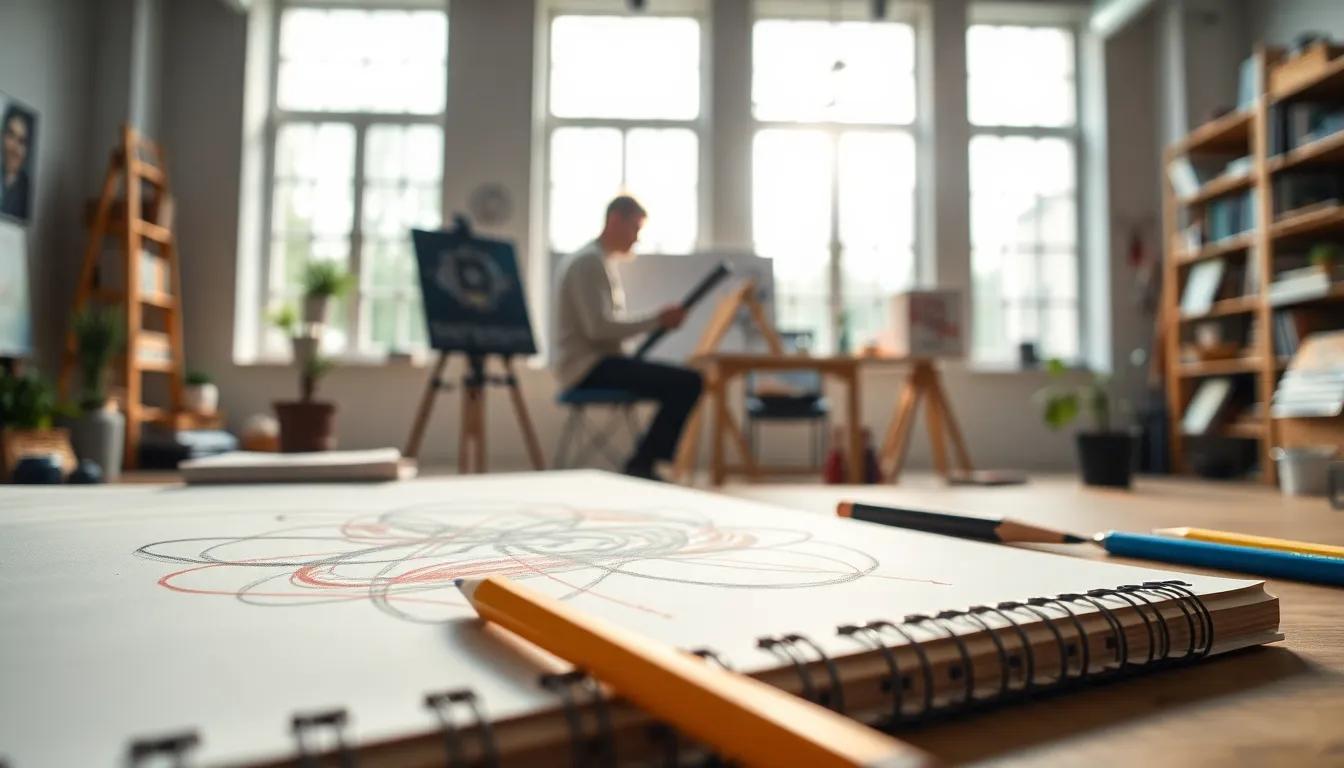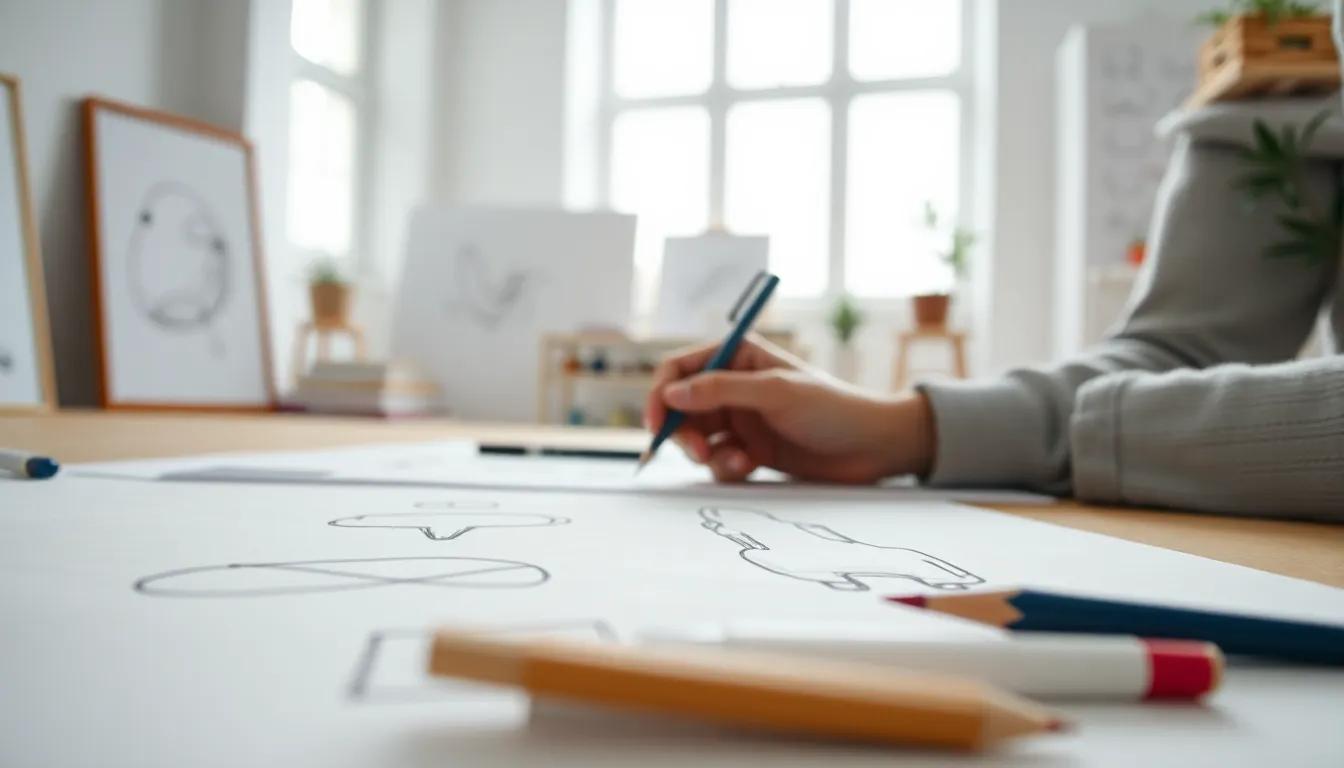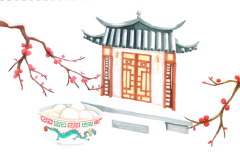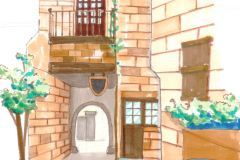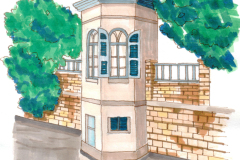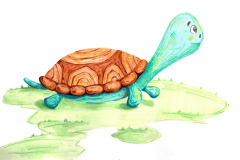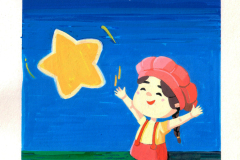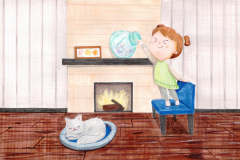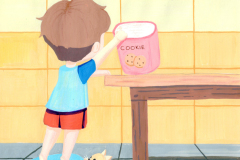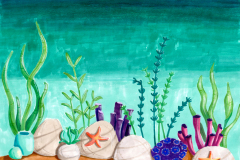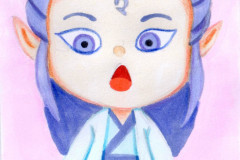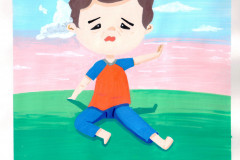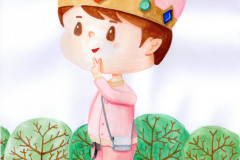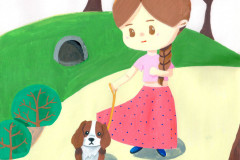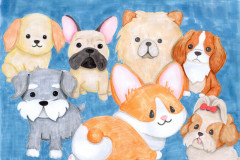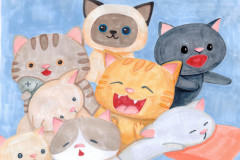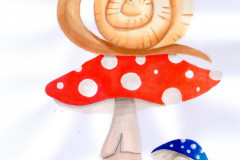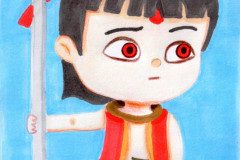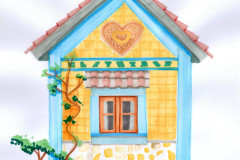Introduction
Drawing is an essential form of creative expression that has existed for centuries, utilizing various instruments like pencils, crayons, and digital tools. As one of the oldest communication methods, it connects people to their thoughts and emotions through visual representation. Innovative drawing ideas can transform the ordinary into the extraordinary, encouraging artists to explore different techniques, styles, and themes. These artistic endeavors not only enhance personal skills but also foster a deeper understanding of forms and figures that reside in the world around us.
The purpose of this article is to delve into numerous creative drawing ideas that can inspire both budding artists and seasoned creatives. We will cover a range of topics including technique variations, themes, and how to seamlessly combine various elements to spark imagination. By reading this article, you will discover practical strategies to invigorate your drawing practice and explore the rich landscape of artistic possibilities.
The Essentials of Drawing Instruments Exploring Modern and Traditional Tools for Artists
In the ever-evolving landscape of art, the choice of drawing instruments is fundamental to an artist’s expression. Understanding the distinct features and potential applications of various tools can deeply influence an artist’s style and technique. From traditional implements to innovative modern options, each instrument offers unique capabilities that can enhance creativity.
Traditional Instruments: The Time-Tested Tools
Artists have long relied on a selection of traditional drawing instruments that have stood the test of time. Pencils, charcoal, graphite, and ink are among the staples in any artist’s toolkit. Pencils come in varied hardness levels, enabling a range of textures from soft shading to sharp lines. Charcoal is favored for its deep blacks and smooth application, allowing for dramatic effects and rich contrasts. Graphite offers a similar versatility but with a more controlled line quality, making it ideal for detailed work.
Ink pens, whether fountain or technical, allow for precision and depth in line work. The fluidity of ink encourages expressive strokes, while various nib sizes can produce anything from bold outlines to delicate details. Utilizing these traditional tools, artists can embrace the tangible, sensory experience of putting pen to paper or pencil to canvas.
Modern Instruments: Advancements in Artistry
On the other hand, modern drawing instruments have expanded the horizons of artistic expression. Digital tablets and styluses have transformed the drawing process, providing limitless options for color, shape, and depth. Programs like Procreate or Adobe Fresco simulate traditional techniques while incorporating novel methods that enable layers and digital effects. The versatility of digital tools facilitates experimentation in a way that traditional media can sometimes limit.
Markers and brush pens have also gained popularity in contemporary art, allowing for vibrant colors and varied line weights. Markers can be used effectively to create bold, graphic illustrations, while brush pens offer the expressive quality of a paintbrush. This blend of traditional and modern instruments fosters an environment ripe for innovation, encouraging artists to push boundaries and explore new styles.
The selection of drawing instruments plays a pivotal role in shaping an artist’s style. Each tool offers unique characteristics that can define how an artist interprets and translates ideas onto their chosen medium, guiding the creative journey and enriching the final outcome of their art.
Exploring Different Drawing Techniques Unleashing Your Creativity with Innovative Methods
Artistic Approaches to Enhance Your Drawing Skills
As artists seek to push the boundaries of their creative expressions, exploring various drawing techniques can serve as a vital means to elevate the quality of their work. Different methods not only enrich an artist’s repertoire but also encourage the evolution of personal style. Here, we will delve into distinctive techniques that can ignite your imagination: line drawing, stippling, and blending.
Line Drawing: The Power of Simplicity
Line drawing is an essential technique that focuses on the precise use of lines to create form, shape, and texture. This method requires minimalistic yet deliberate strokes that can convey intricate details or broad outlines, depending on the artist’s intent. Using varying line thicknesses can add depth and dimension, with heavier lines suggesting shading and lighter lines offering highlights. Consider experimenting with continuous line drawing, where the pencil never lifts off the paper; this can lead to fluidity and spontaneity in your artwork, fostering a sense of unity between the elements of your composition.
Stippling: Artistry Through Dots
Stippling transforms the drawing process into a meticulous dance of dots, utilizing small, distinct marks to build value and texture. This technique allows for a profound exploration of light and shadow, as the density of dots can create varying contrasts. Creating depth in a piece through stippling may require patience but yields unique and visually captivating results. Artists can experiment with different tools, such as fine-tipped pens or stippling brushes, to achieve diverse effects, adding countless possibilities to their artistic toolbox.
Blending: Achieving Seamless Transitions
Blending is a technique that allows artists to create smooth transitions between colors and tones, enhancing realism in their work. Utilizing tools like blending stumps, cotton swabs, or even fingers can help in achieving a polished look. When drawing with graphite or colored pencils, layering and softly smudging can produce soft gradients and soft edges. This technique opens up avenues for achieving more lifelike representations and adding depth to your drawings. Playing with blending can lead to unexpected outcomes, making it a delightful area of exploration.
Incorporating these innovative drawing techniques into your practice not only enhances your skills but also serves as a method for self-expression. As you experiment with line drawing, stippling, and blending, you will discover new dimensions in your art, paving the way for future themed drawing ideas that reflect your imaginative spirit.
Themed Drawing Ideas Creative Themes to Ignite Your Artistic Vision
Nature Themes
Nature is a rich source of inspiration for artists. Drawing landscapes, flora, and fauna can transport viewers to another realm. Consider focusing on specific environments such as a tranquil forest, vibrant coral reefs, or the stark landscapes of a desert. Each of these settings can convey different moods and feelings. For example, a dense forest can evoke a sense of mystery, while a sunny beach might inspire relaxation. To push the creative boundaries, integrate elements of fantasy, such as mythical creatures or surreal transformations of natural scenes.
Abstract Concepts
Abstract drawing encourages freedom of interpretation and expression. Artists can experiment with shapes, colors, and textures to convey emotions or societal themes. Instead of depicting a specific subject, focus on the interaction of colors or the rhythm of lines. Use geometric patterns or organic shapes to explore balance and chaos within your artwork. One innovative approach is to use everyday objects as a springboard; for instance, take inspiration from music by translating the flow of melodies into visual components. This method not only enhances creativity but can also deepen the artist’s connection to their art.
Storytelling Themes
Storytelling through art allows viewers to engage with a narrative visually. Each drawing can depict a moment in a larger story, offering snapshots that invite interpretation. One might illustrate scenes from a favorite book or create a completely original saga. Use character development and setting dynamics as guiding principles. Employ diverse styles ranging from realistic portraits to cartoonish renditions to enhance the emotional resonance of the narrative. Think about using sequential storytelling, akin to a comic strip, where each drawing builds on the last, creating a cohesive tale. This ensures that every line and color contributes to the greater narrative, making your artwork not just a visual experience but a journey.
Inspirational Fusion of Themes
Combining different themes can lead to groundbreaking compositions. For instance, merging abstract elements within a natural landscape or incorporating storytelling features into abstract art can produce compelling visual narratives. Artists are encouraged to experiment with how these themes interact, creating juxtapositions that challenge conventional perceptions. This kind of thematic blending allows for a personal exploration of ideas while crafting truly unique pieces that reflect individual artistic journeys and perspectives.
Combining Different Drawing Styles Blending Realistic and Abstract Elements to Create Unique Artworks
Artists today are increasingly drawn to the practice of blending different drawing styles, creating pieces that capture the imagination and provoke thought. Among the most captivating approaches is the fusion of realistic and abstract elements. This method allows for a diverse range of expressions, appealing to a broad audience while challenging traditional boundaries of representation.
Experimenting with Realism and Abstraction
A key aspect of combining drawing styles involves juxtaposing realistic subjects with abstract backgrounds or elements. For instance, an artist might depict a detailed human figure against a vibrant, swirling landscape that defies the laws of perspective and three-dimensionality. This contrast not only highlights the figure’s intricacies but also invites viewers to question the relationship between the tangible and the imaginary. Such a composition encourages the audience to interact with the artwork on multiple levels, stimulating their own interpretations.
Consider the technique of incorporating abstract shapes or lines into a realistic portrait. These could serve to represent emotions or thoughts, providing a visual narrative that complements the lifelike depiction of the subject. This synergy between styles enables the artist to communicate complex themes, such as identity or inner turmoil, in a visually compelling manner.
Techniques for Successful Integration
For those looking to master the blending of styles, several techniques can enhance the transition between realism and abstraction. First, consider using contrasting color palettes. Bold, vivid colors can elevate abstract elements, while maintaining a more subdued and realistic palette for the primary subjects. This helps to draw the viewer’s focus to the realism while juxtaposing it against the lively abstraction.
Another method involves varying line quality. Employing sharp, precise lines for realistic details alongside softer, more fluid lines for abstract elements can create a satisfying visual dynamic. Experimenting with texture is also vital; smooth surfaces can emphasize realism, whereas rough, exaggerated textures can enrich abstract components, providing depth and intrigue.
Engaging in this blending process not only challenges your artistic ability but also expands your creative repertoire, paving the way for innovative artworks that inspire and ignite your imagination. As you explore these techniques, remember that there are no strict rules; creativity flourishes in the spaces where boundaries blur, allowing your artistic voice to shine through unique combinations of styles.
Creative Drawing Challenges to Ignite Your Art
Stimulating Your Creative Boundaries
Engaging in drawing challenges is a fantastic way to stimulate your creativity and push your artistic boundaries. These challenges can help break through creative blocks, foster innovation, and provide a refreshing approach to your art practice. By embracing various drawing exercises, artists not only enhance their skills but also explore uncharted territories in their artistic expressions.
A popular starting point for many artists is the “30-Day Drawing Challenge.” This challenge offers daily prompts that range from simple objects, like a coffee cup, to more complex themes, such as emotions represented visually. Each day’s prompt encourages artists to explore unique interpretations, driving them to think outside conventional expectations. Completing this challenge not only aids in building a consistent drawing habit but also encourages experimentation with different styles and techniques.
Another intriguing challenge is known as “Draw This in Your Style.” In this exercise, artists take an existing artwork and recreate it in their own distinctive styles. This not only allows for the practice of duplication skills but also fosters the artist’s uniqueness by encouraging personal flair. By studying the original piece, artists can dissect elements like composition, color palette, and technique, ultimately leading them to appreciate different styles and integrate them into their own.
The “Blind Contour Drawing” challenge is an immersive experience that allows artists to hone their observational skills. By drawing a subject without looking at the paper, the artist engages with form and line in a direct, instinctive manner. This challenge cultivates a deeper connection to the subject and emphasizes the act of drawing as a meditative process rather than a results-oriented endeavor.
Participating in collaborative drawing challenges, such as “Exquisite Corpse,” can also spark creativity. Artists can contribute parts of a drawing without seeing the previous contributions, resulting in surprising and often delightful outcomes. This exercise highlights the unpredictability of creativity and encourages artists to adapt and respond to unexpected results.
These creative drawing challenges are not just exercises; they serve as vital tools for artists seeking to elevate their craft. They invite new techniques and the courage to explore art in ways that are often outside one’s comfort zone, paving the way for innovative breakthroughs right at your fingertips.
Building a Drawing Habit Establishing a Routine to Enhance Creativity
Crafting Commitment: Strategies for a Consistent Practice
Establishing a drawing habit is akin to nurturing a growing plant; it requires regular attention, care, and a conducive environment. To foster improvement and creativity in your art, it’s essential to integrate drawing into your daily life. Here are some strategies that can help you cultivate this artistic habit.
Set a specific time each day dedicated to drawing. This commitment creates a routine that trains both your mind and body to anticipate creative sessions. Whether it’s early in the morning or late at night, find a time that suits you best and stick to it. Start small, perhaps with as little as ten minutes a day; consistency is more fruitful than intensity initially.
Creating a dedicated space for your drawing practice is equally vital. Designate a comfortable and inspiring area in your home filled with your favorite art supplies. This space should be free from distractions, allowing you to fully immerse yourself in the creative process. Surround yourself with inspirational materials—posters, sketches, or anything that evokes creativity—to ignite your passion each time you sit down to draw.
Incorporating a variety of drawing prompts can keep your sessions fresh and engaging. Instead of drawing the same subject daily, explore themes such as nature, architecture, or even abstract patterns. Challenge yourself by setting unique themes for the week or drawing from different artistic styles or cultures. This approach encourages exploration and keeps the creative juices flowing, preventing boredom from creeping in.
Reflection plays an equally critical role in developing your drawing habit. At the end of each week, take the time to look back at your drawings. Observe improvements, identify strengths, and note areas where you wish to develop further. Keeping a visual diary or a sketchbook filled with your work can help you track progress while providing a tangible record of your artistic journey.
Encouraging Creativity Through Accountability
Sharing your work with others can enhance your commitment and creativity. Find a community, either locally or online, that encourages support and constructive feedback. Engage in drawing challenges with fellow artists, where accountability adds an extra layer of motivation to keep drawing regularly. By sharing your progress, you not only celebrate your growth but also become part of a creative exchange that fuels your passion for art. This communal aspect can inspire you to push your boundaries and explore new artistic territories.
Sharing and Celebrating Artistic Endeavors Embracing Community through Artistic Exposure
The Power of Sharing Artwork in Community
Sharing one’s artwork is a transformative experience that not only highlights individual talent but also fosters a sense of community among artists and art lovers. The act of sharing goes beyond mere visibility; it encourages dialogue and connection, allowing artists to demonstrate their unique perspectives and techniques. Engaging with an audience can breathe life into an artist’s journey, leading to valuable feedback that fuels creativity and growth.
When artists share their work, they open a door to diverse interpretations and discussions, which can spark new ideas and innovations. This communal interaction cultivates a supportive atmosphere where artists feel inspired to explore unconventional techniques and themes. Additionally, seeing the reactions and thoughts from others can illuminate the impact of their work, revealing insights that might not have been previously considered.
Platforms for Artistic Exposure and Feedback
In the modern landscape, several platforms facilitate the sharing of art, each offering unique advantages. Social media platforms like Instagram and Pinterest serve as vibrant galleries where artists showcase their creations, reach broader audiences, and connect with fellow creatives. These platforms allow for instant feedback, which can be invaluable. Artists often receive encouragement, constructive criticism, or even collaboration opportunities, amplifying their artistic endeavors.
Beyond social media, art-focused websites and apps provide dedicated spaces for sharing and receiving feedback. Websites such as DeviantArt, Behance, and ArtStation not only offer opportunities for exposure but also enable artists to engage with like-minded individuals, participate in contests, and tap into creative resources. Local art exhibitions, workshops, and community events also play a significant role. They provide venues for artists to physically present their work, enabling personal interactions that can foster deeper connections.
Art fairs and group exhibitions allow artists to showcase their work in a more formal setting, while also benefiting from the networking opportunities that come with such events. These gatherings celebrate the diversity of artistic expression, creating an environment where creativity can thrive. Whether through digital mediums or physical spaces, sharing art within the community validates an artist’s journey and helps them to cultivate a nurturing environment for innovation and creativity.
Conclusions
Innovative drawing ideas are the gateway to enhancing artistic expression and igniting creativity in your art. By experimenting with various methods, themes, and instruments, artists can broaden their creative horizons while developing their unique style. Each concept explored in this article serves as a stepping stone, encouraging artists to dive into undiscovered territories of visual expression.
As you embark on your next artistic venture, remember that the journey is just as significant as the final piece. By applying the techniques and insights discussed here, you can continually challenge yourself and elevate your drawing skills. Embrace the process of creation and let your imagination flourish, for your art can always evolve and surprise you.



